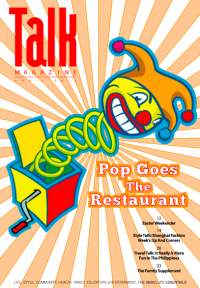Pop Goes The Restaurant
Last year, Bon Appetit declared pop-up restaurants are “over”. Little did they know, the food fad was just getting started in China. Always a couple of years behind the pacesetters in London and NYC, Shanghai’s temporary eateries were on everyone’s lips in the summer of 2013, but they have been hibernating all winter. Now with temperaturas warming, pop-ups are back, serving up exciting food and delicious stories.
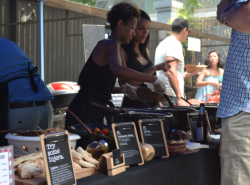
Shanghai may be late on the pop-up trend globally, but it’s a city ripe with opportunity for budding restaurateurs. The idea itself – setting up a short-lived restaurant within the confines of an existing space – mirrors the transience of the local expat community. The explosion of cottage industries that serve everything from chutney to beef jerky is proof that the demand for hometown flavours is already high. Taking the foreign foods out of the home and into the market seems like the next logical step.
Part of the appeal of pop-ups in other international cities is the unconventional locations, from condemned buildings turned into elegant dining rooms or unequipped airplane hangars commandeered by chefs who have to rough it reality-tv-style to get the meal to the table. But vigilant chengguan have put the kabosh on most line-crossing locales in Shanghai, so these home-grown, short-term events have piggybacked onto existing restaurants and bars already kitted out with working kitchens, as well as food hygiene and liquor licenses (bureaucratic hurdles that can set even the most experienced restaurateurs back more than six months). Working out of these established spaces means low – or more often no - rent in a city where real estate prices are prohibitively high for creative cooks who want a laboratory to experiment in, without the pressure of start-up costs or investors hanging over their heads.
Take the Banh Mi Brothaz. In April 2012, Madison’s Austin Hu, Grumpy Pig’s Vinh Nguyen and Humble Meat’s Marc Johnson joined forces to give Shanghai a decent Vietnamese sandwich, something noticeably lacking around town to the trained trio.
“By nature as chefs, we express ourselves through food – that’s how we show affection, how we get excited about things. What better expression is there than making a food that normally we can’t find in Shanghai and make it a reality?” said Hu. “[The pop-up] was a chance to play in a field that was not our expertise. We just happened to have three American chefs, united in love of banh mi.”
The event was so successful that they repeated it the following year, then started collaborating with other notable chefs around the city (like Goga’s Brad Turley and Boxing Cat Brewery’s Sean Jorgenson) to organise collaborative, chef-driven events that rotate through their restaurants and feature a single dish from each chef. Hu also brought the pop-up concept in-house, using his own bar at Madi’s to test out a Taiwanese beef noodle concept he’s been ruminating on for years now. The first attempt didn’t live up to his expectations when his noodle supplier couldn’t keep up with demand. Heading up the learning curve, Hu is now planning a series of pop-ups to help him refine his sourcing and tweak his recipe, with the hope of doing something more permanent in the future.
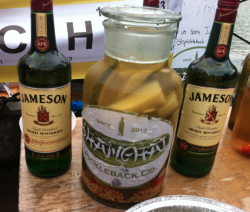
Like Hu, Shanghai’s professional chefs, many of whom cut their teeth in pop-up rich areas like San Francisco, caught on to the trend quickly, seeing it as an opportunity to use already-loyal diners as guinea pigs for new ideas. But it took a seismic shift in the city’s expat community for the trend to go amateur: the gentrification of Yongkang Lu.
Shanghai Pickleback Company is run by three independently successful men with no experience in F&B, but they were quick to see the opportunity on Yongkang Lu, now ground zero for pop-ups.
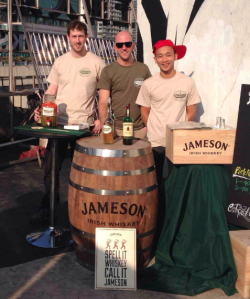
“Ten new places opened in the span of a month, and it went from being ‘Stagiaires Plus’ to being a place where people were doing all sorts of niche things. We wanted to be a part of it,” one of the cofounders said.
Plans to set up an adult lemonade stand on wheels were scrapped when locals living above the bars started battling with the inebriated foreigners who flooded the streets every night. Then over a round of deconstructed tequila shots with the owner of Handle Bar, they decided to take over the bike-themed pub for a lazy Saturday afternoon. On their first outing, SHPickleback went through five bottles of Jameson in just a few hours, after only publicising the event on Instagram with two days notice; a guerrilla marketing technique that makes the buzz surrounding each new event that much louder with each “like” and regram.
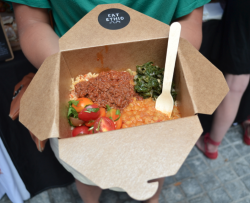
Yongkang Lu quickly became a breeding ground for these temporary restaurants, a trend Helina Tesega attributes to the fact that street is “like a pop-up itself.” Tesega herself found success with the Eat Ethio concept, which set up temporary shop at Handle Bar for three weeks last summer and at various art and design fairs. In addition to hosting Ruijin Cajun (a collaboration between two non-professional chefs serving dishes from the Big Easy) and Xiao Eva’s Xinjiang, Handle Bar’s one-off collaboration with Shanghai Kebabs turned into a partnership, and the bar now sells doners under the name Oh My Kebabs.
Other drinking holes without a focused food menu, like Rooster, have used pop-ups as a way to tap into the trend that has spread to other bars on the street. Taphouse hosted a month-long series of pop-ups featuring rotating chefs and restaurateurs like Brian Tock of the eponymous Montreal Deli.
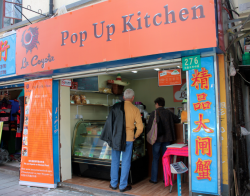
Most of the amateur cooks operate the events for “fun”, just covering their costs (often giving profits to charity), but some use it as a learning experience to go on to bigger things. Ruijin Cajun has turned itself into a catering company, while still doing pop-ups at food festivals, with hopes they can garner enough of a following to merit turning their business into bricks and mortar. Established chef Gabriela Fernandez is working from the same business model backwards, leaving behind stints at big kitchens like Maya and Mi Tierra to create her own catering and frozen food brand: La Coyota. She started using long-term pop-ups last month as a way to increase brand awareness, renting a spot forthrightly named “Pop-Up Kitchen” next to Avocado Lady for six months to serve her made-to-order burritos and tacos. Although designed to be little more tan a marketing tool, business is already booming.
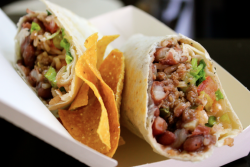
“People started complaining in the first week, ‘Get a bigger place!’” said Fernandez. Her staff had to rearrange the store’s layout, adding in a counter to block overeager diners from pushing their way up to the flat-top burner grilling chorizo. Despite repeated overtures, she has no plans to go back to a restaurant setting. Working for herself and opening new pop-ups around the city every couple of months has allowed her to cook the street food of Mexico and interact with locals more, who she says are less intimidated by her impromptu street side stand than the white tablecloths at Mi Tierra’s 220-seat mansion.
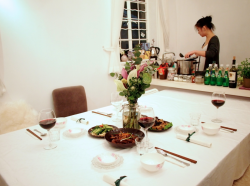
A subgenre of pop-ups, private dining, has also taken off in Shanghai, with a spin locals can get involved in. White Studio Private Dining is run by Yilei Wu, a young Shanghainese designer, who hosts dinner parties with the help of some chef friends in the ground floor of her workspace. Tucked away in Jing’an Villas, the studio used to be a storefront before the chengguan enforced the residence zoning of the lilong. Inspired by the laneway’s hobnobbing neighbours and young, creative types who made their homes there, Wu wanted to create a place that could bring like-minded people together for a unique dining experience, while also conveniently helping cover some of the rent for her studio upstairs.
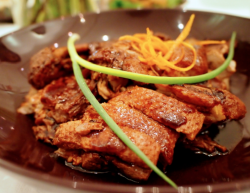
A recent home-style Shanghainese dinner party featured dishes made by a local chef as well as Wu’s elderly neighbour, including hongshao rou the nainai spent three hours making. "That’s why the food tastes different tan a restaurant’s where no one will have the time or patience to do that. I feel that all comercial restaurants feel the same at the end, in a way. The idea here is that anything can happen. Neighbours may drop in to say hi and join the party, or a friend may stop by to sing a few songs,” Wu said. “Every time someone contacts me, I want to make that night different and interesting for them to have a really wonderful memory to talk about for the next ten years.”
Bringing together people to create an unforgettable meal was also the motivation behind launching Shanghai Supperclub for Camden Hauge. But where White Studio hosts groups of friends, this roving dinner party relies on manufactured scarcity to drum up interest. Diners are asked to submit their names to a website and wait for an invitation with the secret details about the monthly event.
Originally designed by Hauge to just be a way to meet new people in town, the advertiser-by-day quickly realised she was ill-equipped to juggle hosting and cooking duties at the inaugural event. So she outsourced, creating a platform for talented chefs, like Fernandez of La Coyota and Amelia Heaton-Renshaw of jams & chutney fame. The pay-off for Hauge has been one of confidence; she now has a bigger restaurant project in the works and cites her experience meeting passionate people who work in F&B through the event as one of the motivating factors to becoming a part of their community in a more permanent way.
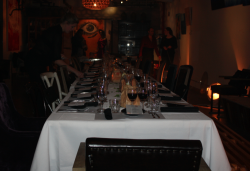
A young foodie turning her dream of a restaurant into a reality by way of an underground supperclub? That’s the pop-up fairy tale. Bon Appetit may be ready to say goodbye to these amateur events, but Shanghai is just starting to reap the benefits. By lowering the barrier for entry, they are changing the F&B landscape of Shanghai for the better, introducing new, innovative chefs and fun specific cuisines that diners would otherwise miss out on. The pop-up experience may be fleeting, but then again isn’t everything in Shanghai?

